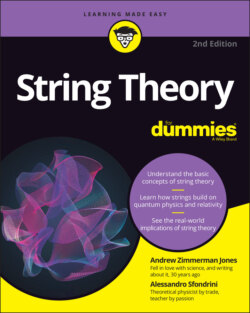Читать книгу String Theory For Dummies - Andrew Zimmerman Jones - Страница 79
Combining forces: Science as unification
ОглавлениеScience can be seen as a progressive series of unifications between ideas that were, at one point, seen as separate and distinct. For example, biochemistry came about by applying the study of chemistry to systems in biology. Together with zoology, this yields genetics and neo-Darwinism — the modern theory of evolution by natural selection, the cornerstone of biology.
In this way, we know that all biological systems are fundamentally chemical systems. And all chemical systems, in turn, come from combining different atoms to form molecules that ultimately follow the assorted laws defined in the Standard Model of particle physics.
Physics, because it studies the most fundamental aspects of nature, is the science most interested in these principles of unification. String theory, if successful, might unify all fundamental physical forces of the universe down to one fundamental object — a string.
Galileo and Newton unified the heavens and Earth in their work in astronomy, defining the motion of heavenly bodies and firmly establishing that Earth follows exactly the same rules as all other bodies in our solar system. Michael Faraday and James Clerk Maxwell unified the concepts of electricity and magnetism into a single concept governed by uniform laws — electromagnetism. (If you want more information on gravity or electromagnetism, you’ll be attracted to Chapter 5.)
Albert Einstein, with the help of his old teacher Hermann Minkowski, unified the notions of space and time as dimensions of space-time, through his theory of special relativity. In the same year, as part of the same theory, he unified the concepts of mass and energy as well. Years later, in his general theory of relativity, he unified gravitational force and special relativity into one theory.
Central to quantum physics is the notion that particles and waves aren’t the separate phenomena they appear to be. Instead, particles and waves can be seen as the same unified phenomenon, viewed differently in different circumstances.
The unification continued in the Standard Model of particle physics, when electromagnetism was ultimately unified with the “weak” nuclear force (which is responsible for radioactivity) into a single force, which, in line with physicists’ lack of imagination in naming things, was dubbed the “electroweak” force.
The process of unification has been astoundingly successful, because nearly everything in nature can be traced back to the Standard Model — except for gravity. String theory, if successful, will be the ultimate unification theory, finally bringing gravity into harmony with the other forces.
